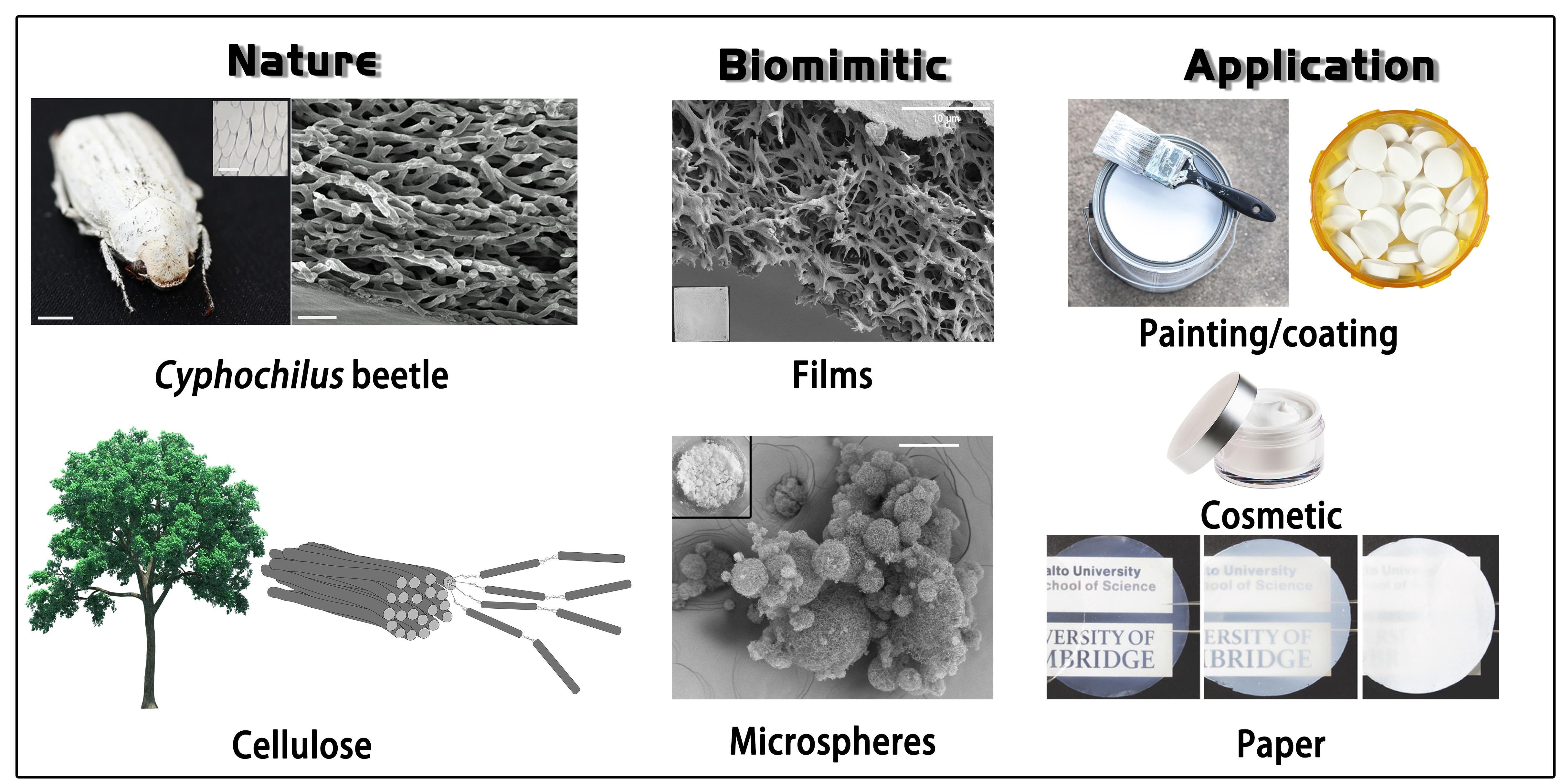
Education:
PhD in Chemistry, University of Cambridge, UK (2019-)
MRes in Green Chemistry: Environment and energy, Imperial College London, UK (2016-2017)
BSc in Chemistry, University of Bristol, UK (2013-2016)

Research:
White colouration is generated by a disordered internal microstructure that is absorption-free and is capable of inducing diffuse, wavelength-independent scattering of light. Increasing scattering strength of materials is of crucial importance nowadays, especially for the production of bright white materials. Simple approaches that people currently use are either increase the number of scatterers (which can be simply achieved by increasing the thickness of the material); while the other is to use scattering elements that are more effective in scattering light (i.e. with a higher refractive index). In industry, titanium dioxide (TiO2) nanoparticles are exploited as scattering elements as the white pigment in paints and cosmetics, because they have a high refractive index (n≈2.6) and do not absorb visible light. However, there are now growing concerns about the impact of TiO2 nanoparticles on human health and the environment, it is crucial to find a more biocompatible, environmentally-friendly replacement.
Nature provides an inspiration – the Cyphochilus white beetle, which expresses an excellent scattering ability as a result of its optimal disordered chitin network. This provides us with the possibility of obtaining highly scattering efficiency using only low refractive materials. My research interest is aiming at fabricating highly scattering materials by mimicking the optimal network of the Cyphochilus beetle, with biocompatible, sustainable cellulose derivatives.
